Types of drainage on the site
If you have built or bought a house on a plot where there is an excess of moisture, then we should expect soon problems. Water can flood the basement or foundation. Such a nuisance can lead to the destruction of the structure. Therefore, it is imperative to make a drainage system on the site. Initially, you need to know what types of drainage exist, and this, in turn, will help you make the right choice. It is about the varieties of such systems and will be discussed in this article.
Deep drainage system

If at the site the groundwater comes close to the surface, or it is located in the lowland, then it is necessary to create a deep drainage system. In this case, special pipes or drains are placed in the ground at a certain depth.
Before creating a deep drainage system, some research needs to be done:
- need to know the depth of the flow of groundwater;
- conduct a study of the landscape of the site (with the definition of natural slopes and depressions);
- find out the composition of the soil.
After this is done the scheme of the drainage system. Then the markup is transferred to the site. On the marked landmarks dig trenches for laying pipes. So that they do not drag on silt, a filter is created around. For this, geotextiles and a layer of rubble are used.
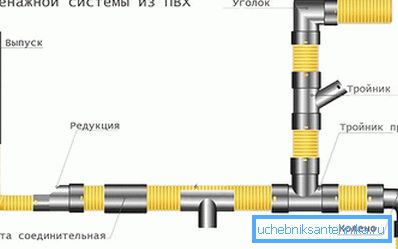
All pipes of the deep system are displayed at the lowest point on the site. An accumulation or drainage well is created here. In the first case, the accumulated water is pumped out of the site with the help of pumps. And if a drainage well is created, the water is discharged into the ground.
If there is a reservoir or hollow nearby, then water can be pumped out of the well there.
Deep drainage system requires large labor and financial costs. But if the site is subject to flooding and groundwater is located close to the surface, then there may not be another way out. Such a system most effectively lowers the level of groundwater.
Surface or open system type
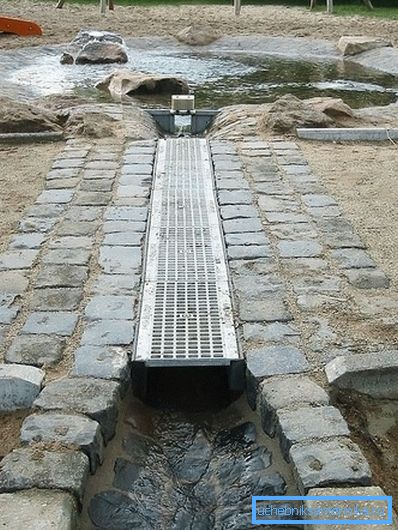
If there is a need to drain water only from precipitation (during rain or snow melting), then surface or open drainage can be arranged. Such systems will be much cheaper than the deep ones, and making them yourself is much easier.
Open drainage is a ditch, which is the drainage of water from the site. As a rule, such trenches have a width of 50 cm and a depth of up to 60 cm. The trenches themselves are strengthened with:
- geomats;
- geogrids;
- geogrid;
- gabions.
Trenches are laid in the direction of the natural slope of the surface. To make the water flow better, a slope is made in the direction of the accumulation or drainage well (or to the natural ditch outside the site).
Along the perimeter of the house and buildings, ditches are also created, which will collect water flowing from the roofs.
To create an open drainage, you can use trays produced by an industrial method. Such products last a long time and have an attractive appearance. In addition, they can be equipped with various protective devices that will protect the system from debris.
Feeding option
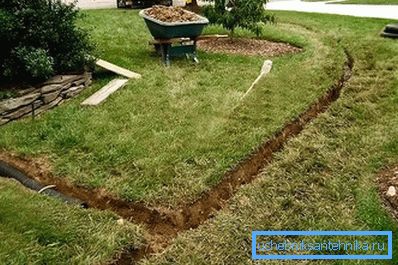
Among the types of drainage systems there is a charging option. Drainage of this type as well as open can be easily done with your own hands. To do this, you must purchase one of the following pipe versions:
- lay the perforated pipes;
- create soft sods.
In the first embodiment, the drainage pipes are laid in the ground in almost the same way as in the case of using deep-seated systems. The only difference is the depth of the sods. It is possible to deepen pipes into the ground shallowly, 30–60 cm is enough.
If you decide to lay soft turf, you must perform the following work:
- According to pre-arranged marks, trenches are dug (from 15 to 40 cm deep) in the same way as in the case of surface drainage.
- Then ditches fall asleep permeable material. Sand, broken brick or crushed stone are perfect for this. But the best option is clay.
- Above all, the soil is poured and stacked with turf cut before trenching. As a result, the appearance of the site will not change.

To improve performance, and, more precisely, to prevent silting, soft turf can be wrapped with geofabric. But even such additional protection will not make such a system more effective. Drainage from soft turfs, although cheap, does not work very well.
Difference of systems in construction
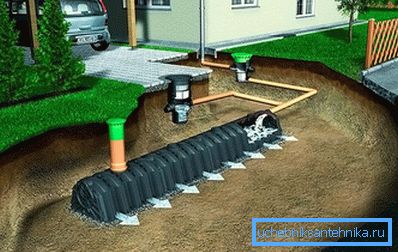
In addition to the depth of the drainage elements, drainage systems are separated by their design. There are three types:
- horizontal;
- vertical;
- combined.
Most drainage systems are horizontal. Drainage trays, drainage pipes, ditches and other elements are arranged in a horizontal plane. Such systems are most common both in private households and in urban infrastructure.
If the site requires a large amount of groundwater, then vertical drainage systems can be used. They are tubular wells. They are located throughout the site. The wells themselves are connected by pipes with pumping units, as a result of which the water is pumped out. At the same time, in the places of pumping the groundwater level decreases, which leads to the formation of depression funnels. As a result, water flows into the wells from the entire territory adjacent to them.
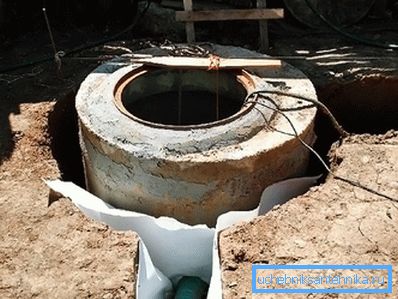
Vertical drainage systems help to more effectively drain water from the site. Thus, they most reliably protect the structure from flooding. But such systems are costly at the operation stage. In their work pumps are used for pumping out, which waste energy.
Combined drainage systems are used in those areas where the upper layer of the soil does not conduct water well, and in the depth sand is located with a large amount of moisture. In such systems, elements of horizontal systems are installed closer to the surface, and groundwater is pumped out using tubular wells.
What materials are used

In addition to the above, drainage systems can be divided by the materials used to create them. For deep and backfill drainage, pipes made of such materials are often used:
- ceramics;
- asbestos cement;
- plastic.
The first two options are used for quite some time, but recently their popularity has noticeably decreased. Plastic has come to replace them. This material is lightweight, easy to install, durable and not afraid of mechanical shock. Not only pipes, but also other elements of the drainage system are made of plastic. So, you can buy various fittings for connecting pipes, inspection and storage wells, various water tanks and much more.
If we are talking about surface drainage, then the choice of material can be very diverse. Such a system will always be in sight, which means it must have an appropriate appearance. Therefore, it is worth buying water conduits that are made from stainless steel, ceramic or plastic.

But you can do with improvised means. Very often, drainage ditches are made in the form of a flooded concrete gutter. If the trenches are large enough, you can strengthen them with a geogrid or gabions. If you have any questions on the topic, then write comments to the article. The site experts will provide you with additional advice in a short time.
Video
For the efficiency of the drainage system, special pumps are often used. The advantages of these pumps are discussed in the video: